Play and Leisure
Poker tables, foosball tables, and Ping-Pong™ tables are equipment and gaming furniture designed for leisure and play. Concepts of health, safety, and welfare have transformed the landscape of recreational gaming. Today’s furnishings are safer than before, minimizing the risk of injury and limiting exposure to liability. Many foosball tables have telescoping rods (Figure 2.47). Some swings and play equipment are now made from recycled plastic and rubber synthetics, and many game tables have materials and decorative finishes that emit fewer VOCs.
Outdoor Furnishings
A significant percentage of outdoor furniture is manufactured from exotic hardwoods such as teak, jarrah (from Australia), or ipe (Figure 2.48) and maintained yearly with an ultraviolet (UV) protecting and penetrating oil or allowed to develop a patina of a natural silver-gray color. Other woods that perform well outdoors include redwood, cypress, cedar, and mahogany. Urban, forested lumber is a sustainable choice for outdoor furniture in public places. (Figures 2.49, 2.50, and 2.51).
Aluminum is a popular metal for outdoor furniture because it is lightweight and weathers well. Water-resistant materials and fabrics are used to improve comfort where the metal comes in contact with the body (Figure 2.52).
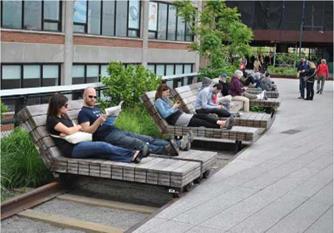
 |
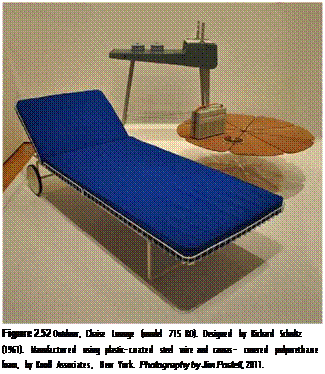 |
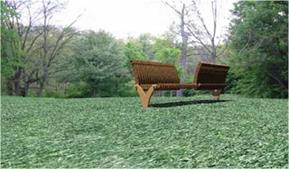 |
|
Figure 2.48 Outside lounge seating along NYC’s Highline (2009). Assembled boards of ipe lumber form rolling, outdoor lounge seating located along the raised walkway. Photography by Jim Postell, 2011.
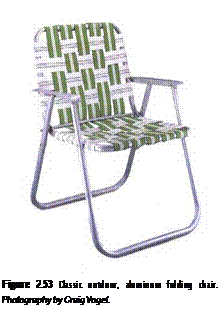
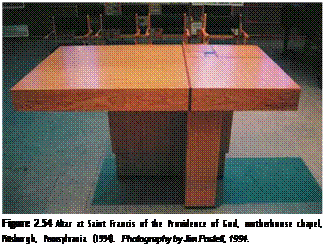 The classic aluminum folding lawn chairs of the 1950s and the wooden director’s chairs of the 1970s are precedents for many contemporary folding chairs used today for camping and watching outdoor sporting events (Figure 2.53).
The classic aluminum folding lawn chairs of the 1950s and the wooden director’s chairs of the 1970s are precedents for many contemporary folding chairs used today for camping and watching outdoor sporting events (Figure 2.53).
The Adirondack chair is a generic type of chair often used in rural outdoor settings. It was named after the Adirondack region of northern New York. Thomas Lee is credited for designing the precursor to the Adirondack chair in 1903, using eleven pieces of wood cut from a single board. The chair had a straight back and seat with wide arms. His friend Harry Bunnell, who was a carpenter from Westport, New York, fabricated the chair design for Mr Lee. Shortly thereafter, in 1905 Mr. Bunnell applied for and received a patent for the design and began producing "Westport plank chairs" made of hemlock for the next 20 years.
Roto-molded polyethylene (PE) furnishings are ideal for outdoor use. The material is lightweight, comfortable, and weathers well. Generally, however, outdoor furnishings made of polyethylene are bulky and rarely are designed to fold.



